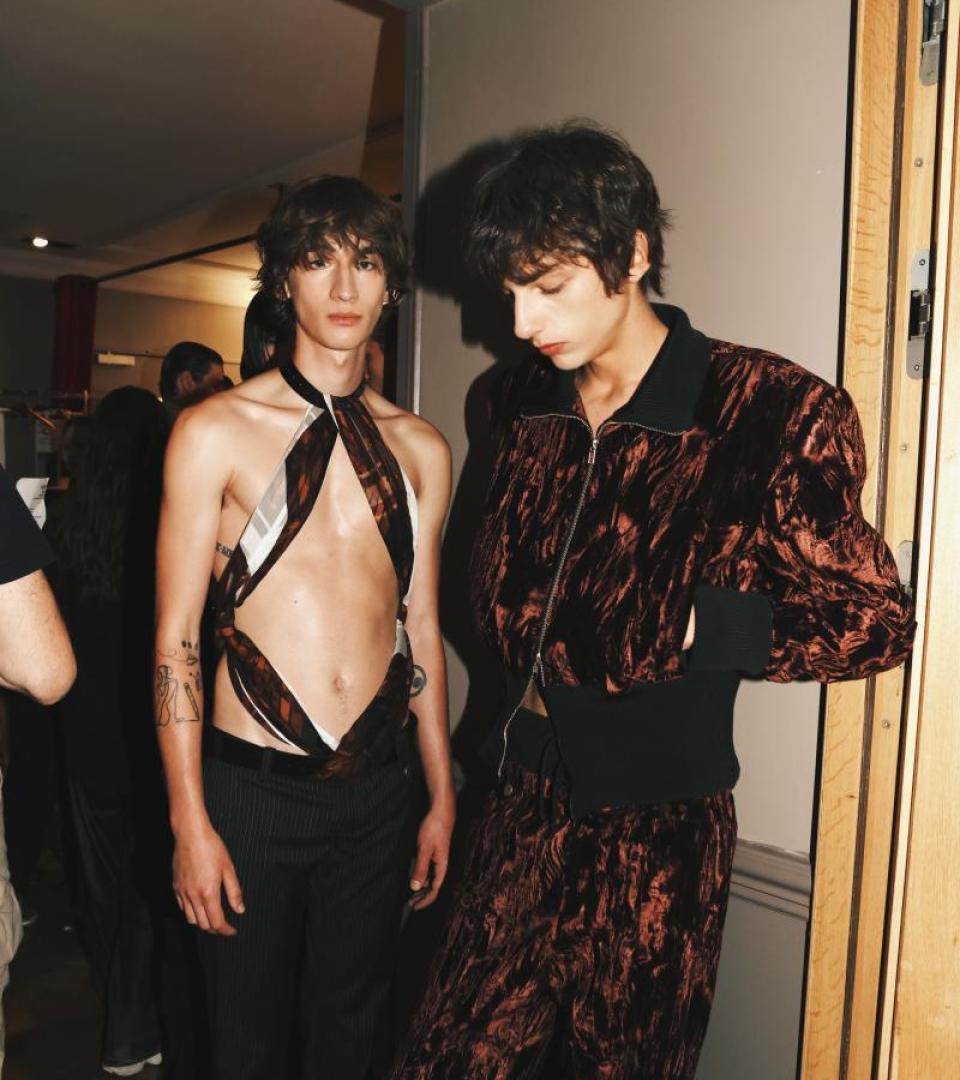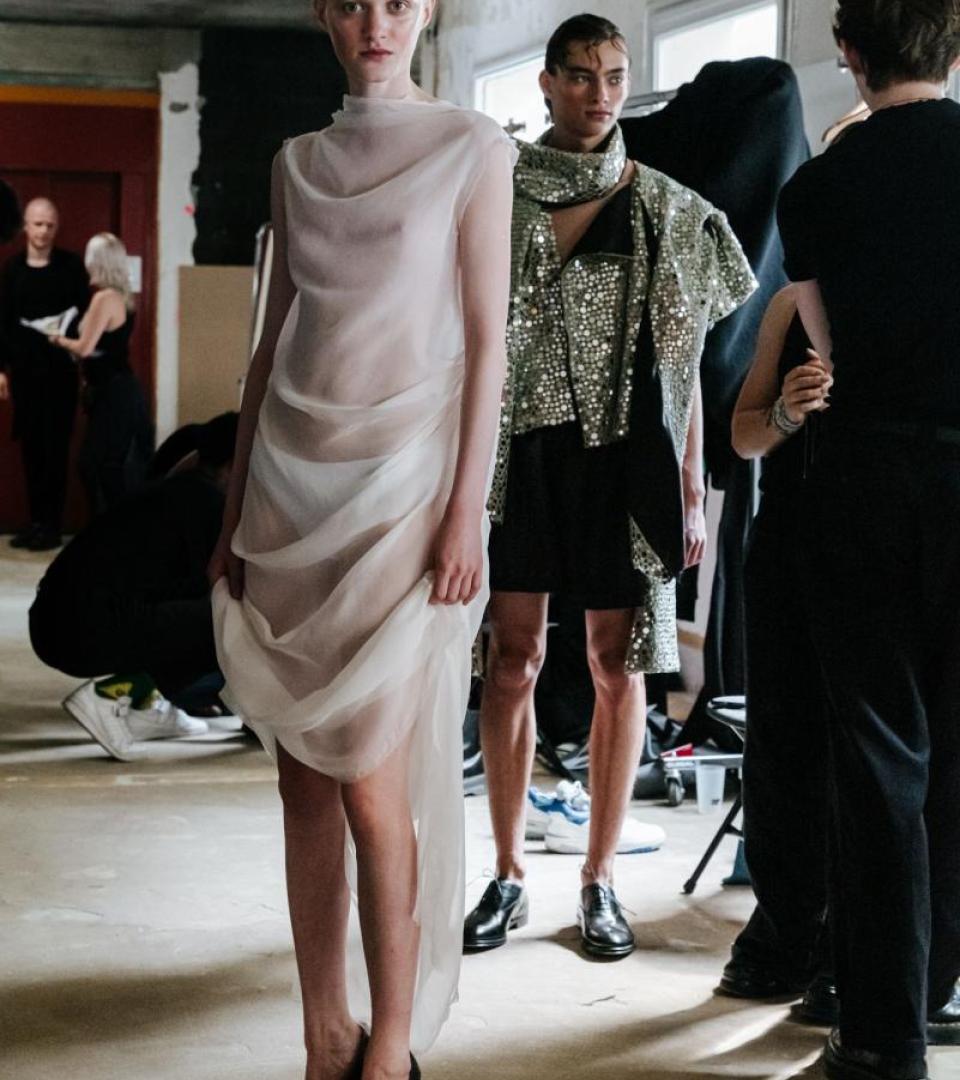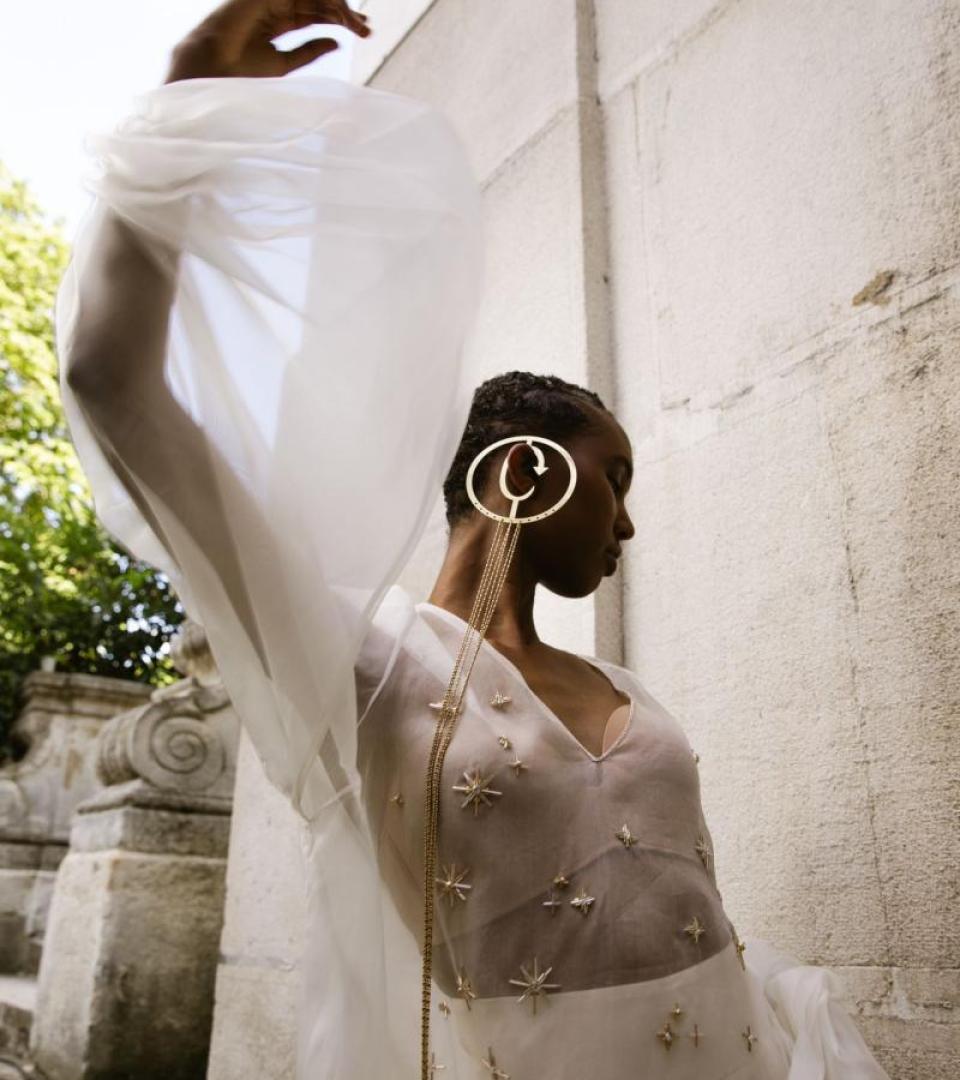This year marks the 50th anniversary of Paris Fashion Week. What, for you, makes Paris Fashion Week® unlike any other?
When I started in the late 1960s, the majority of designers were French. Ten years later, that had changed, especially with the arrival of designers from Japan that nobody had ever heard of. What made Paris so special was the meeting of designers from all over the world, whose presence confirmed that Paris was the place to be if you wanted to make a name for yourself in fashion. At the end of the 1990s, the Parisian scene was extraordinary, mixing Americans, brilliant Brits and Belgians like Dries Van Noten. It's interesting to see that today; several of the major Belgian players of the 1990s are retiring and saying their goodbyes here in Paris, a city that enabled them to make connections they would never have had elsewhere. It's a fine tribute to the generosity of Paris, which lives on.
Can you tell us about your first fashion show?
I was 18 and spending a summer in Paris before going to Cambridge. I was studying at the École de la Chambre Syndicale — I wanted to be a fashion designer at the time — while staying with my sister in the house of an old Russian woman. I didn't really know anything about fashion, and she took me to see a Nina Ricci collection. I was so excited! It was slow, superb; each garment had a name announced in religious silence.
At my second fashion show, I was studying and I still didn't know what I wanted to do. I'd been directed towards drawing. So I took advantage of the fashion show to practice, which got me kicked out at the time. I was so disappointed and ashamed.
The fashion shows I later attended as a journalist for Hérald Tribunes were totally different. You have to understand that in the 1990s, the public at fashion shows in Paris was still mainly made up of clothes buyers. It was much smaller and more intimate. Today, there can be 2,000 people at a show, like the Dior show on Tuesday, for example. In 1975, there were no more than 200 people at a Dior show. Today, fashion is in fashion.
In 2013, you wrote an article entitled ‘Fashion Circus’ in the New York Times, describing the metamorphosis of the catwalk audience.
When I started out, I used to look at the black silhouettes of the catwalk audience. I myself never wore them, but I remember being stopped outside a show by somebody asking me if we’d just come from a funeral. Things have changed so much. Not just in Paris. You have to understand that the evolution of communication techniques, with telephones equipped with ever more powerful cameras, is linked to a multiplication of stagings. The changes are happening very fast, and it's true that it’s like a circus, because some people want to be seen. After that, I’d like to stress that I’ve got nothing against circuses! But sometimes you just want a bit of peace and quiet!
Let's go back in time: was there a particular show at the start of ready-to-wear week in 1973 that struck or shocked you?
I think it's always the same story: a new generation comes along and overturns the rules. I've always admired designers who succeed in becoming myths. At the same time, there's always a need for freshness, and it's in the younger generation that you find it. It's only natural. In the era of ready-to-wear, Yves Saint Laurent provides a very good illustration of this, but there are many others who were ready to invent extraordinary things and to dare. Then, they grow old, and their customers with them, and a new generation is needed. What I find fascinating is that young people still want to present in Paris. I'd say that 60 percent of designers come from abroad, because Paris is a kind of holy place for fashion. They know that to be successful, you have to show your collection in Paris.
Are there any young designers whose beginnings made a particular impression on you?
You know, there are so many, and I've written about them all... One in particular: Margiela! He was incredible from his first show at the Café de la Gare. Different from all of them. Belgian designers have a different attitude, a different vision of women and a unique way of presenting them. They brought a Northern European dynamic, whereas the spirit of Paris was perhaps more Southern European in the early 1980s. It's also worth remembering that at that time, the Italian week was growing and most Italian designers were presenting in their own country. This also had an impact on the fashion landscape.
British designers always wanted to go to Paris, as did the Americans. The French-Israeli-American Alber Elbaz fascinated me. I discovered him in America when he was working for Geoffrey Beene. Then, he came to Paris in the mid-1990s to work for Guy Laroche, before arriving at Saint Laurent in 1998. He was very nervous before his first show, and yet he produced sublime collections. His shows were different for the time, because he showed different types of women, which is very important and generous. After all, everyone is different, so why not emphasise that diversity and try to think of a wider variety of clothes?
You've met a lot of designers. Have you ever regretted questions or criticisms?
Yes, of course! There's one particular memory I like to tell. I'm probably one of the last people who still goes to Paris Fashion Week® to have seen Mademoiselle Chanel herself, on rue Cambon, at the top of the legendary staircase from where she watched the shows. She sat down and I looked at her, this elderly woman about whom I still knew very little. I was 22, and I found the show boring... I said to myself: “Why would anyone want to wear these clothes?” And now I'm thinking: why didn't I talk to her and try to understand her better? But that's fashion, after all, isn't it! I'm sure there's a generation out there who look at designers who started out just 10 years ago and think they're old and out of date.
Speaking of Chanel, how do you feel about Karl Lagerfeld's shows, particularly those held at the Grand Palais from the 2000s onwards, each more spectacular than the last?
I think one of the most interesting things to observe in fashion is the evolution of the designer himself - I mean, his physical change, his look. I remember Karl Lagerfeld in the 1990s before his diet, it was a difficult period for him, for other reasons... Then, he metamorphosed. He became this very slim person, dressed in a slim suit, very modern. So it's interesting to see how the evolution of a designer's looks can influence the way he creates. Karl Lagerfeld was extraordinary, and he had this ability to reinvent himself and fashion at the same time!
You've covered a lot of Japanese fashion in Paris, particularly the beginnings of Rei Kawakubo and Yohji Yamamoto in the early 1980s. How would you describe that experience?
I don't think it was shocking, it was just very different. Designers [from Asia] don't create clothes moulded to the shape of the body like French designers do, but they invent another body. This approach was totally the opposite of what was being done in Paris. Suddenly, there were clothes that gave women a great deal of freedom - clothes in which they felt very comfortable. There was also Issey Miyake, who was brilliant. They were all very different. To suggest that they were the same would be completely wrong. They were very original, and ‘genderfluid’ before the term even existed.
Paris also featured weeks devoted to men's fashion. How was this innovative?
The change in men's fashion is central, it has to be said. When I started at the International Herald Tribune in 1988, I also covered menswear, but there were very few designers in this field. I'm delighted, even if I don't cover any more, to see the evolution of this week and its proposals. I recently went to an exhibition at the Victoria + Albert Museum of Art in London, and I realised that 300 years ago, men dressed very dramatically with ornamentation. It's important to remember that.
What interests you most about fashion at the moment?
Innovations in textiles and artificial intelligence. This will undoubtedly lead to wonderful things, but I'm not sure I'll live long enough to see them! On the other hand, I think fashion has changed its status in recent years, particularly for women, who are using it more and more to express their own personalities. They wear clothes less to follow the trends of the moment, and they assert themselves, which shows real progress for women. Some men too... People often laugh at fashion, thinking it's a joke, but what people wear always has a meaning - to themselves and also a meaning perceived by others. I've always been fascinated by fashion. That's why I'll always love it.
My final question concerns the new generation of designers who are showing in Paris this season: what do you expect from the young designers?
I'm always looking for the same thing: not novelty as such, but freshness. It's not just about being a new designer. Sometimes, certain designers I know produce one of their best collections in the world, and that's fresh! I like to see as much as possible and I try to discover new designers, because they are the future.
This interview has been lightly edited.



